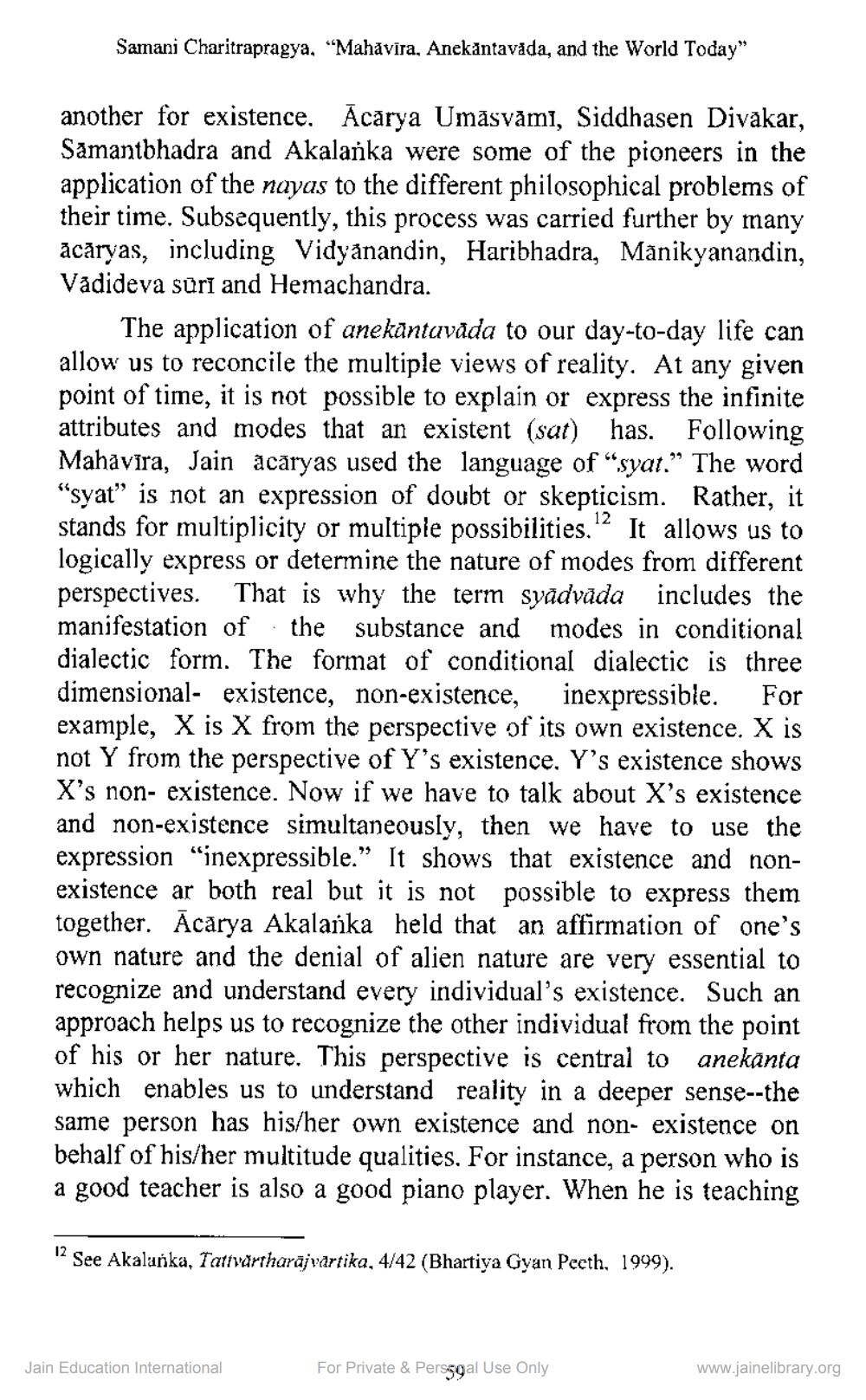Book Title: Mahavira Anekantavada and World Today Author(s): Charitrapragya Samani Publisher: Z_Lessons_of_Ahimsa_and_Anekanta_for_Contemporary_Life_014006.pdf View full book textPage 6
________________ Samani Charitrapragya, "Mahavira, Anekantavada, and the World Today" another for existence. Acārya Umāsvāmi, Siddhasen Divakar, Samantbhadra and Akalanka were some of the pioneers in the application of the nayas to the different philosophical problems of their time. Subsequently, this process was carried further by many ācāryas, including Vidyanandin, Haribhadra, Mānikyanandin, Vadideva süri and Hemachandra. The application of anekantavāda to our day-to-day life can allow us to reconcile the multiple views of reality. At any given point of time, it is not possible to explain or express the infinite attributes and modes that an existent (sat) has. Following Mahavira, Jain acāryas used the language of "syat.” The word "syat" is not an expression of doubt or skepticism. Rather, it stands for multiplicity or multiple possibilities. It allows us to logically express or determine the nature of modes from different perspectives. That is why the term syadvada includes the manifestation of the substance and modes in conditional dialectic form. The format of conditional dialectic is three dimensional- existence, non-existence, inexpressible. For example, X is X from the perspective of its own existence. X is not Y from the perspective of Y's existence. Y's existence shows X's non- existence. Now if we have to talk about X's existence and non-existence simultaneously, then we have to use the expression "inexpressible.” It shows that existence and nonexistence ar both real but it is not possible to express them together. Ācārya Akalanka held that an affirmation of one's own nature and the denial of alien nature are very essential to recognize and understand every individual's existence. Such an approach helps us to recognize the other individual from the point of his or her nature. This perspective is central to anekanta which enables us to understand reality in a deeper sense--the same person has his/her own existence and non- existence on behalf of his/her multitude qualities. For instance, a person who is a good teacher is also a good piano player. When he is teaching 12 See Akalanka, Tattvärtharājvārtika, 4/42 (Bhartiya Gyan Peeth, 1999). Jain Education International For Private & Persggal Use Only www.jainelibrary.orgPage Navigation
1 ... 4 5 6 7 8
